WHAT’S AN ORRERY?
An orrery is a mechanical model of the solar system that illustrates or predicts the relative positions and motions of planets around the Sun.
Orreries have a stationary globe at their centre, representing the Sun, and moving spheres at the end of each of their arms, representing the planets. An intricate system of cogs and wheels operated by an external handle drive the planetary rotations and orbits. Orreries vary in size and also in the number of planets they feature. A ‘grand orrery’ is so called because it includes all of the planets known at the time of its construction.
An orrery is a specific type of planetarium, which is the general term used to describe 3D models of the solar system. Other types of planetaria include Telluriums, which show how days, nights and the seasons are created by Earth’s rotation, axial tilt and orbit around the Sun; Lunariums, which show the complex motions and phases of the Moon; Astrariums, which demonstrate the cyclical nature of celestial objects like an astrological clock; and Armillary Spheres, which use spherical rings to illustrate the relative geometry of the heavens with respect to Earth.
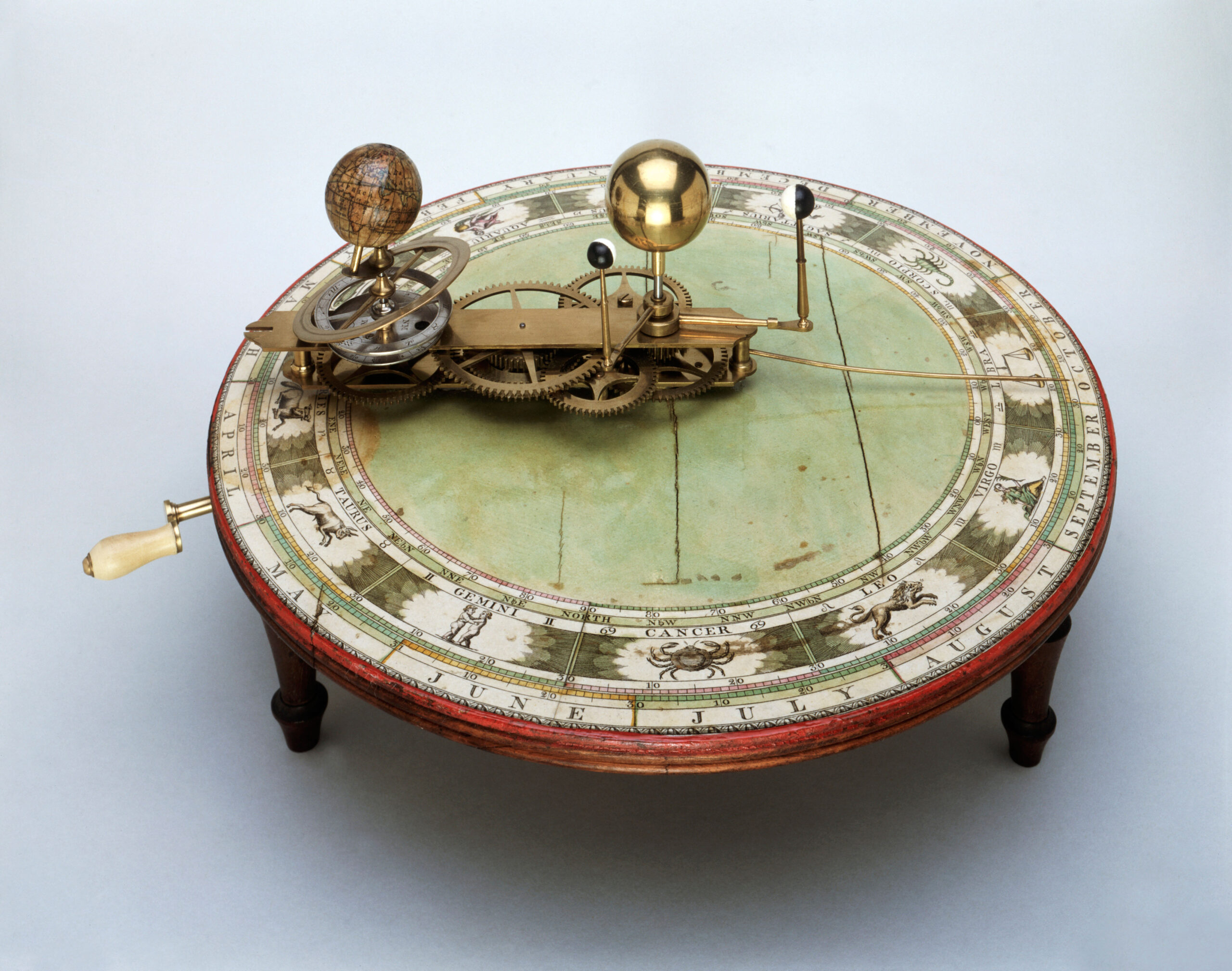
18th Century Orrery, artist unknown
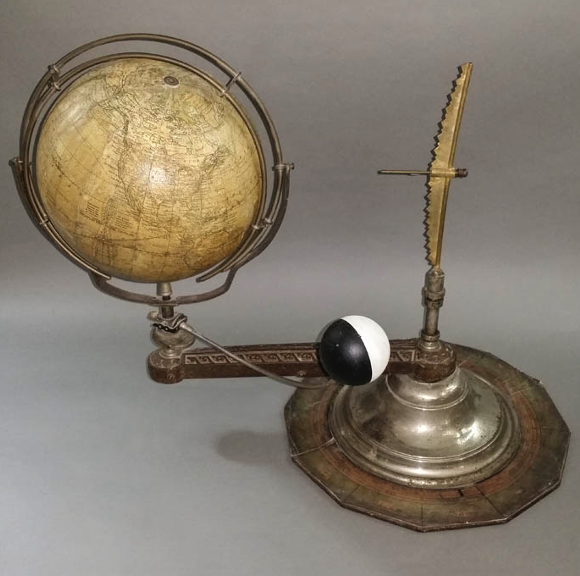
Andrew’s Tellurian by Weber Costello c. 1900
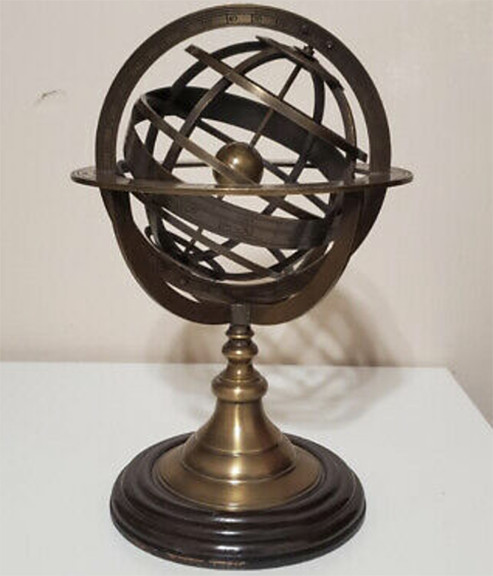
An Armillary Sphere
The earliest known orrery, named the Antikythera Mechanism, dates back over 2,000 years to Ancient Greece. It was discovered in 1901 in a shipwreck off Antikythera island and was capable of accurately predicting astronomical positions and eclipses decades before their occurrence.
So surprising was its complexity and accuracy that it has been dubbed the oldest example of an analogue computer. Indeed, technological artifacts of equal sophistication did not reappear until the development of mechanical astronomical clocks in Europe in the fourteenth century.
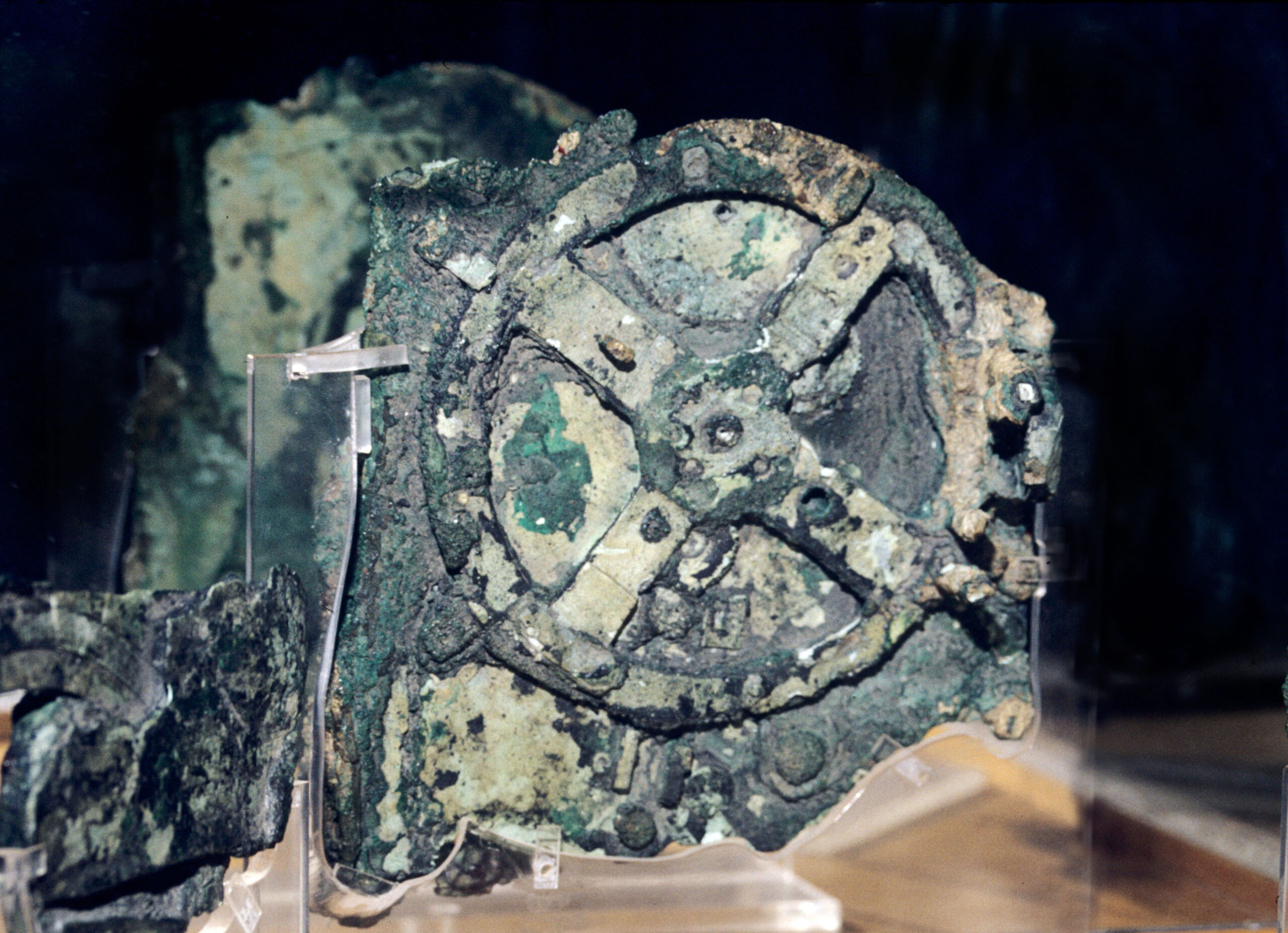
Antikythera Mechanism (main fragment)
The Antikythera Mechanism had Earth at its centre. (NOSTI too is geocentric because astrology interprets cosmic phenomenon from the point of view of Earth). This traditional view of the universe, also referred to as the Ptolemaic System after its advocate, Egyptian astrologer and astronomer, Claudius Ptolemy, had long since prevailed.
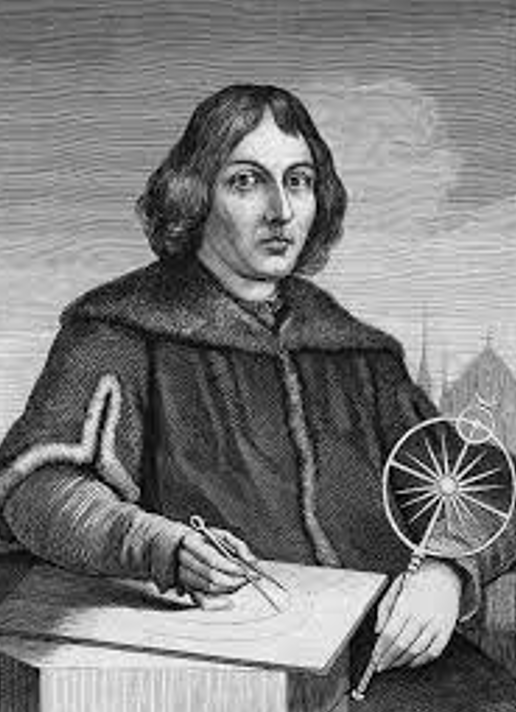
Nicolaus Copernicus, 1473 – 1543
However, in 1543, Polish astronomer Nicolaus Copernicus turned everything on its head by proposing that, in fact, the Earth orbits the Sun. This created a paradigm shift in mankind’s conception of the universe and contributed significantly to the Scientific Revolution and the emergence of modern science.
In the century that followed, great progress was made in understanding the structure of the solar system and by the 18th Century, heliocentric models were being made to demonstrate these discoveries.
The first orrery of this modern era was built in 1704 by George Graham, an eminent English watchmaker and scientific instrument maker, and Thomas Tompion, known as ‘the father of English clockmaking’.
History tells that Graham gave the first model, or its design, to the celebrated instrument maker John Rowley of London to make a copy for Prince Eugene of Savoy.
Rowley was subsequently commissioned to make a further copy for his patron Charles Boyle, 4th Earl of Orrery, from whom the device took its name.
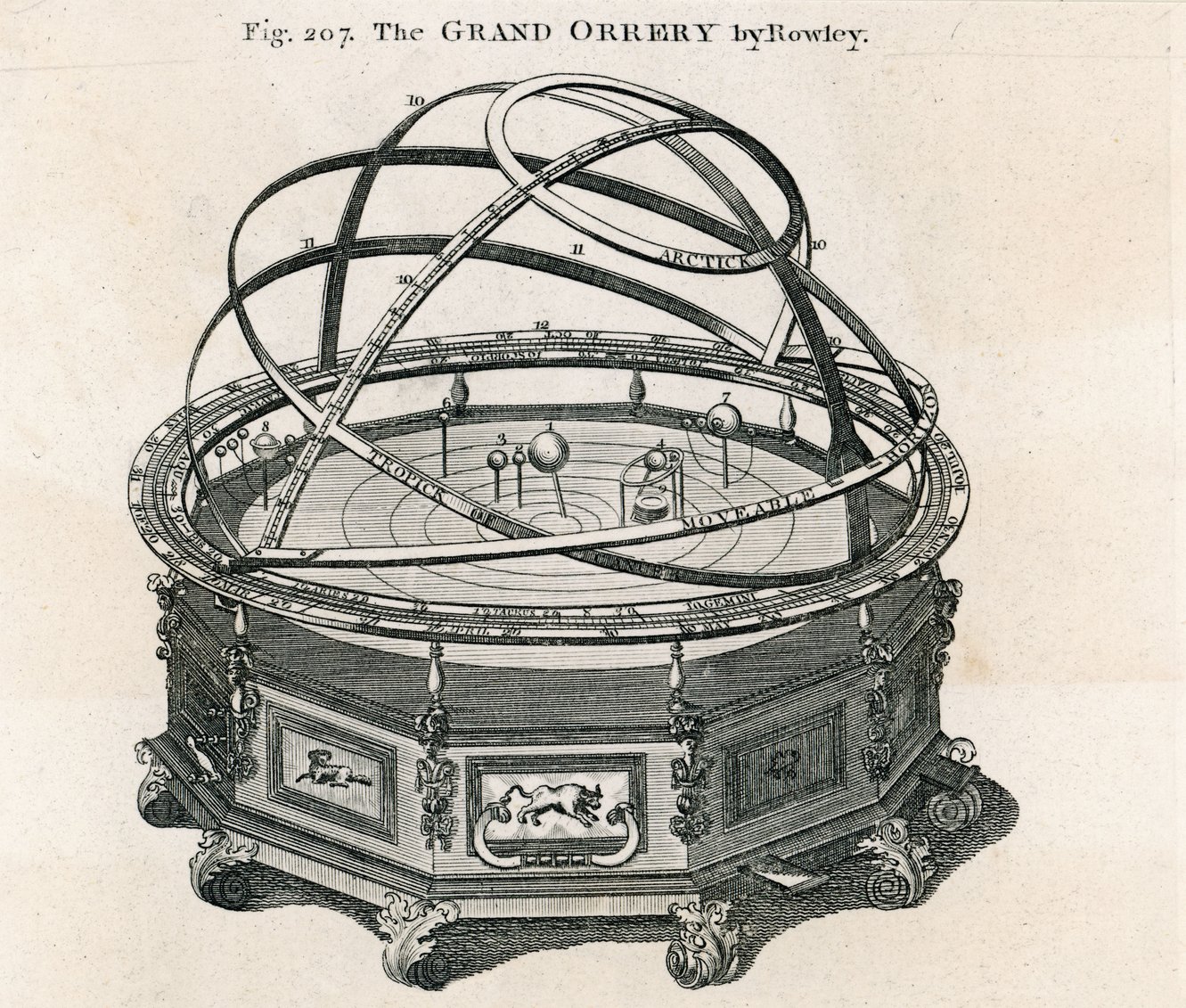
The Grand Orrery by Rowley
The popularity of orreries in the 18th Century was fuelled by enthusiasm for the work of Sir Isaac Newton whose theory of gravity (the Law of Universal Gravitation) had provided an explanation for the orbits of the planets. Even more instruments were built after 1781 following Sir William Herschel’s discovery of Uranus.
The fascination that these advances inspired in the general population is clearly depicted in the painting ‘A Philosopher Lecturing on the Orrery’ by Joseph Wright of Derby, who became the unofficial artist of the Enlightenment. The wonder and awe expressed in the faces of the children, and the nearby adult taking copious notes, says it all.
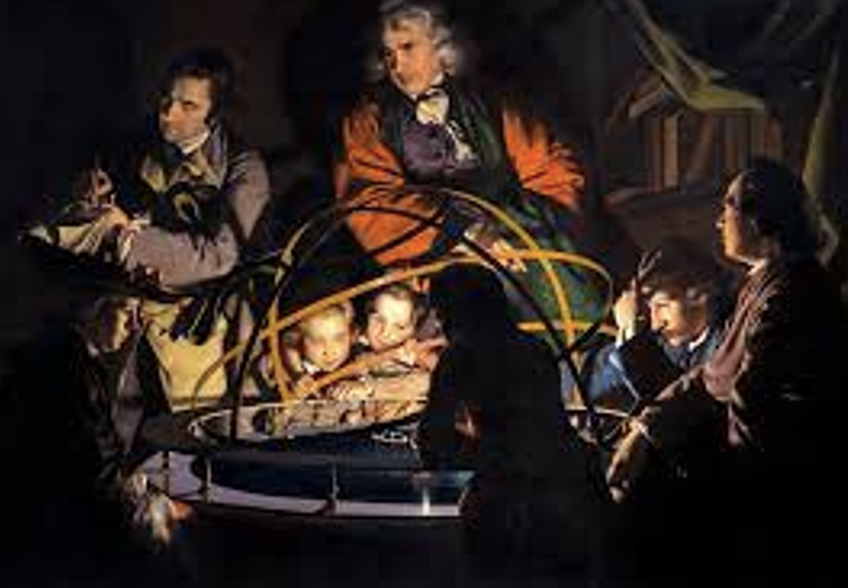
Joseph Wright’s picture of The Orrery c. 1766
I too am captivated by the beauty and mystery of the cosmos and avidly watch TV programmes by Professor Brian Cox and others. I’m also driven to decipher some sort of meaning in life and I suppose this combination of science and philosophy led me to astrology.
Questions such as does the energy of the cosmos affect us on Earth? And if so, can it shape or influence our psychological make-up? More profoundly still, did we choose to incarnate when we did, and with our specific character traits and challenges, in order to evolve our souls?
Whatever conclusion you come to personally, it’s certainly a topic worth exploring.
-ENDS-
